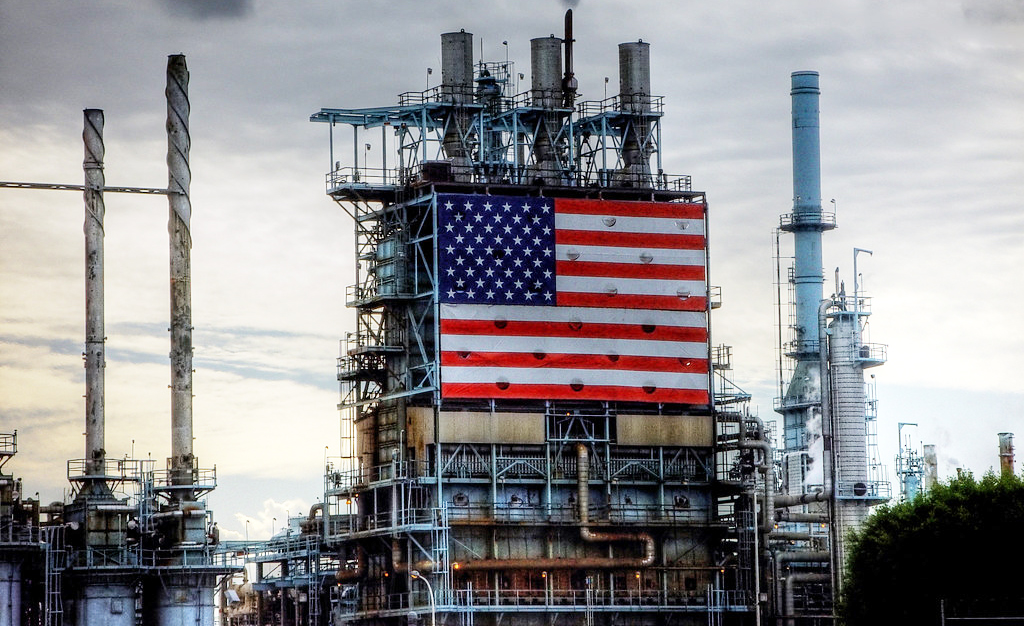 Energy independence has been a goal of the United States since the oil crisis of the 1970s. And while 2019 saw record domestic oil production, the United States was still a net importer of oil with net imports totaling $192 billion. In an OurEnergyPolicy webinar on June 24, 2020, Yossie Hollander—Co-Founder and Chairman of The Fuel Freedom Foundation—discussed energy independence and current efforts to achieve it. He explained how in today’s interconnected world, reducing U.S. dependence on global oil prices requires more than just increasing domestic oil production. To make energy (oil) independence a reality, we need a broader approach of reexamining the ways we power transportation and ensuring competitive markets for a variety of transportation fuels.
Energy independence has been a goal of the United States since the oil crisis of the 1970s. And while 2019 saw record domestic oil production, the United States was still a net importer of oil with net imports totaling $192 billion. In an OurEnergyPolicy webinar on June 24, 2020, Yossie Hollander—Co-Founder and Chairman of The Fuel Freedom Foundation—discussed energy independence and current efforts to achieve it. He explained how in today’s interconnected world, reducing U.S. dependence on global oil prices requires more than just increasing domestic oil production. To make energy (oil) independence a reality, we need a broader approach of reexamining the ways we power transportation and ensuring competitive markets for a variety of transportation fuels.
Mr. Hollander said that we have made strides in fighting our oil dependence by improving vehicle efficiency, increasing domestic oil production, and eliminating petroleum use in electricity production; however, more can be done. As of 2019, 92% of our transportation sector was still oil-dependent. Enabling competitive fuel markets for oil alternatives such as biofuels and compressed natural gas would help fight our oil dependence. It could also lead to cheaper and cleaner options for consumers. Increased adoption of electric vehicles and increased use of alternative fuels could all potentially lower the transportation sector’s use of oil and help to bring us closer to energy independence.
Mr. Hollander said that even if we produced all our oil domestically, we would still be influenced by global oil prices. Removing market barriers to competitive fuels, decreasing our reliance on oil as a fuel source with new and alternative technologies, and supporting domestic production of natural gas all have the potential to help the United States become truly energy independent.
|
Learn more in our webinar series on transportation: Part one – Policy and the Future of Transportation Fuels |
Question 1: Should states invest more money in expanding infrastructure for alternative fuels?
No. The US goal should not be “energy independence” but rather a carbon-free energy future. Compressed Natural Gas is a fossil fuel and should be phased out along with the… Read more »
QUESTION 1: Yes, we must supplement our crude-oil supplies with high-energy density bio-oils that will scale well for refining into drop-in biofuels for heavy transportation needs. I partially agree with… Read more »
Question 2: What other technologies can help reduce our dependence on petroleum?
The obvious solution is vehicle electrification along with the expansion of zero-carbon electricity production. For passenger vehicles, BEVs are already cheaper on a life-cycle basis and will be cheaper on… Read more »
The United States should insure we maximize the entire portfolio of clean, waste free, zero carbon transportation options. Sustainable biomass which includes ethanol, butanol, and biodiesel make sense as does… Read more »
QUESTION 2: I suggest development of large algae energy farms on our abundant non-arable lands for producing biofuel feedstocks for refining into biodiesel and bio-jet aviation fuels (67 bil gals/yr)… Read more »